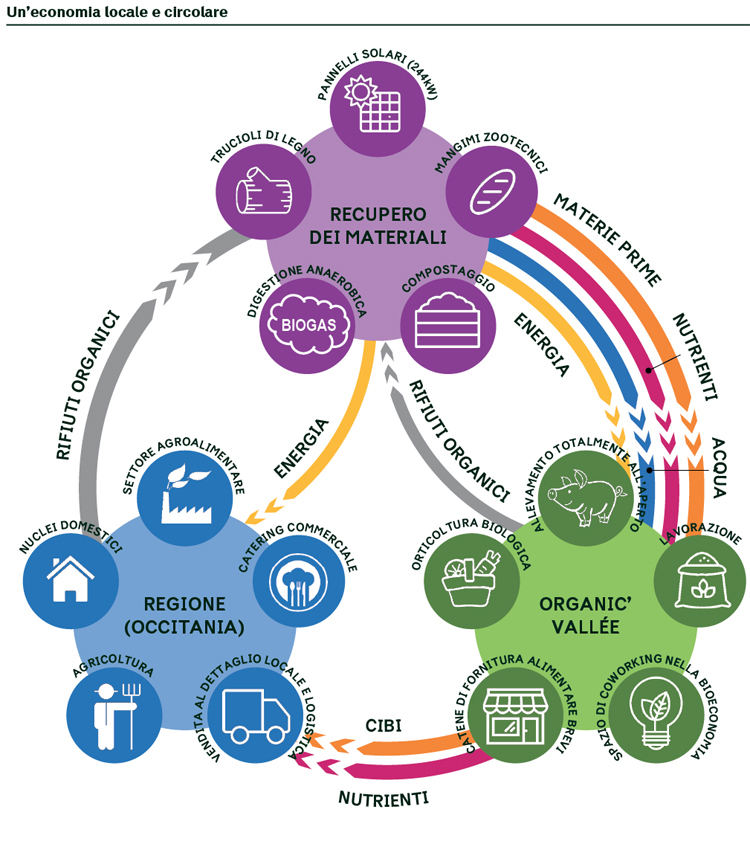edited by Institut de l’économie circulaire, Paris www.institut-economie-circulaire.fr
Organic’Vallée was officially created as a cooperative of collective interest in June 2015. That is, in France, the only legal form that enables the capitalistic integration of companies from the so called “classical” business sector, business from the social solidarity economy, NGOs, public bodies, citizens.
That is to say, the full range of stakeholders that may be concerned by local economic development or territorial preservation, and may want to take part in the life and governance of our cooperative.
The project develops a cluster of agro-activities based on bio-wastes and organic material streams with a holistic and territorial approach.
Our goal is three-fold.
- Divert discarded organic materials from incineration or landfilling. Discarded organic materials are water-rich: it is a scientific, economic, environmental and social nonsense to aim at recovering energy from such material streams through incineration, or to let organic matter accumulate in landfills.
- Channel these material streams out of their generation areas towards local material recovery to grow, breed and produce local resources. The cooperative’s productions are marketed through short distribution channels.
- Train the people, because the challenges that we are facing remain widely ignored by the majority of citizens and urban dwellers. That makes training and awareness rising key to changing people’s mindset and consumer culture. We take action at our level by teaming up with partners to offer training sessions on circular economy, agroecology, organic waste recovery.
 |
|
Figure courtesy of Organic’Vallée © 2017. All rights reserved.
|
Organic’Vallée sits on 55 ha of rural land. The cluster is designed so that each and every single activity that joins can benefit from synergy effects by connecting with the others. Some of the activities are held by the cooperative due to their experimental nature or structuring impact – e.g. implanting an agroforestry system on 7 ha. Others are developed by farmers and entrepreneurs, such as free-range pig rearing, partly fed with former food stuff from local supermarkets. Yearly metrics: 160 metric tons of recovered material, 15 hectares, 150 Gascon pigs.
We hope that someday other areas can capitalize on our experience, and develop similar clusters elsewhere.
Organic’Vallée, www.organicvallee.fr

